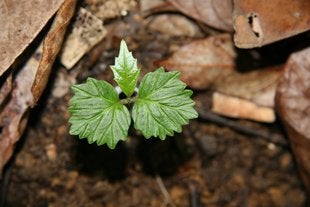Research
Tree Responses to Climate Change
Understanding what determines tree species responses to climate is necessary for predicting shifts in species composition in forests worldwide that are experiencing more severe and extreme climatic stresses. Tree species’ responses to extreme events are mainly determined by their physiological limitations. However, integrating physiological information to advance our knowledge about species responses to future climates is complex because physiological responses may change across space and time. Our projects are focused on understanding variation in organisms’ phenotypes in response to environmental changes in forests of Puerto Rico and Colombia.
Defining Functional Strategies of Trees
Species phenotypes are the outcome of a combination of multiple functional traits that mediate species responses to the environment and ultimately influence fitness. Often, these traits covary with each other as a result of trade-offs, that constraint trait variation defining trait dimensions. These trait dimensions are useful for classifying and characterizing species into different ecological strategies. However, most of the current knowledge of functional dimensions are focused on leaf traits. We are developing projects interested in characterizing functional dimensions of trees using belowground and aboveground traits.
Our projects are based on temperate (at the E.S. George Reserve in Michigan) and tropical forests (at the Field Station El verde in Puerto Rico and tropical dry forests in Colombia).
Check out our blog and the video about our work in Michigan to learn more about our research and the exciting discoveries we are making.
Scaling Up from Individuals to Communities

We emphasize the significance of intra-specific trait differences often overlooked in trait-based ecology studies. We examine how within-species trait variation can shed light on essential mechanisms driving species interactions and plant community assembly. To achieve this, our projects analyze growth and survival data integrating detailed measurements of individual-level trait variation. These measurements offer a comprehensive understanding of the processes governing community structure and dynamics.
Tree Diversity in the Amazon Forest

The Amazon harbors one of the richest ecosystems on Earth. Such diversity is partially due to plant specialization, associated with the occurrence of a mosaic of forest (i.e. flooded and terra firme forests). In 2009 I established three 1-ha permanent plots in three different forest types in the Colombian Amazon to assess the importance of habitat specialization in driving compositional and phylogenetic variation across the Amazonian forest. These three plots are now part of the Amazon Tree Diversity Network (ATDN). Since then, the team has published great papers that have fostered understanding of the processes that maintain and originate the incredible diversity of these forests.


